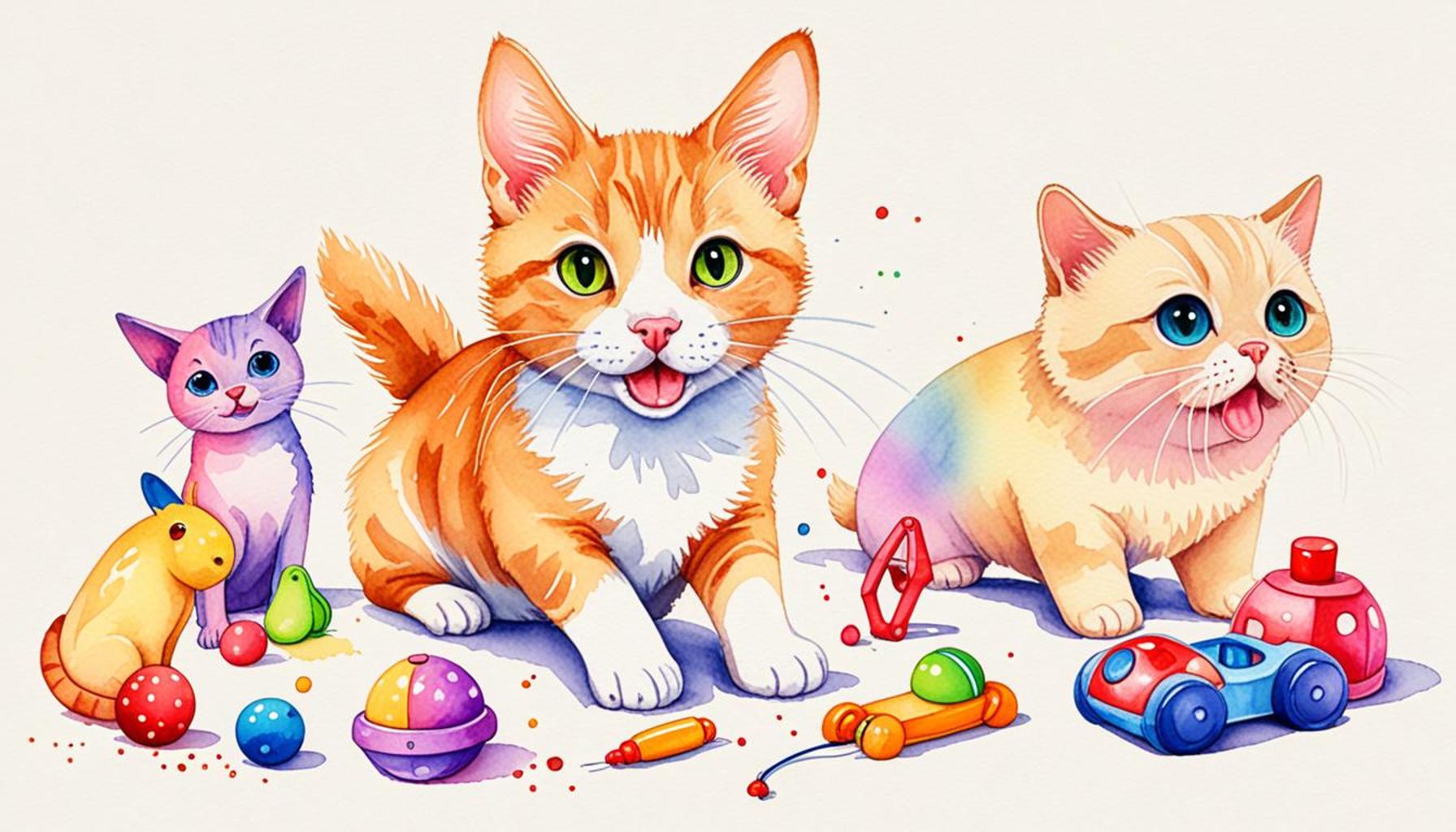The Role of Interactive Toys in Training Your Pet: Engaging Minds and Bodies

The Multifaceted Benefits of Interactive Toys for Pets
In today’s fast-paced world, finding innovative ways to train and engage our pets is essential for their holistic development. Interactive toys stand out as remarkable instruments that not only entertain but also challenge your pet’s intellect and enhance their physical agility. By integrating play with training, pet owners can foster a more enriching environment that contributes to a pet’s happiness.
One of the primary advantages of interactive toys is their ability to encourage problem-solving skills. For instance, puzzle toys that require pets to manipulate different pieces to obtain a treat can significantly boost a dog’s cognitive function. Research shows that such mental challenges can lead to improved focus and reduced anxiety. On the other hand, cats, with their natural predatory instincts, benefit from toys that replicate the erratic movement of prey. This not only keeps them physically active but also sharpens their hunting skills, which is a natural behavior for felines.
- Promotes physical activity: Interactive toys compel pets to move, jump, and explore. For dogs, frisbees that dispense treats upon capture or balls that bounce erratically can turn a mundane backyard into an exciting arena of agility.
- Combats boredom and destructive behavior: Boredom can lead to negative behaviors like excessive barking or chewing. Engaging toys can redirect this energy, transforming anxious habits into productive playtime.
Furthermore, the variety of interactive toy options is impressive. Choices range from treat dispensers that reward pets for their agility, to puzzle feeders that make mealtime a challenging activity. Even small mammals, like hamsters and rabbits, benefit from toys that stimulate their natural instincts. For example, a tunnel system designed for a rabbit can encourage exploration and physical exercise, contributing to their overall well-being.
Another significant aspect of utilizing interactive toys is the bond it fosters between pets and their owners. Engaging together in interactive play deepens the relationship and creates shared experiences that contribute to emotional well-being. As you witness your pet solve puzzles and enjoy challenges, it can also enhance your joy and satisfaction as a pet parent.
In summary, the role of interactive toys extends far beyond mere entertainment; they are indispensable tools in nurturing a pet’s mental and physical health. As pet owners explore the myriad types of interactive toys available on the market, they open avenues for transforming training sessions into exciting and enriching learning adventures. The investment in such toys can yield astonishing benefits for both pets and their human companions, making it a worthy consideration for any pet-parenting household.

LEARN MORE: Click here for tips on managing behavioral issues
Enhancing Cognitive Development Through Play
The myriad benefits of interactive toys extend deeply into a pet’s cognitive development. Engaging in play that requires pets to think critically and solve problems is essential for their overall growth. Toy designs, such as modular puzzles, give dogs and cats the opportunity to work through challenges, fostering a sense of accomplishment when they succeed. Studies suggest that just like humans, pets who are mentally stimulated display improved memory and learning capabilities. This enhancement is particularly vital as pets age, helping to combat cognitive decline.
Moreover, interactive toys can serve as valuable tools for training commands and behaviors. Clicker training often works seamlessly with interactive toys, reinforcing commands through the sound of a click followed by a reward. A simple treat-dispensing toy can turn practicing commands like “sit” or “stay” into a captivating game, making learning enjoyable for both pets and their owners. Socialization plays a role here as well; using toys during playdates can help dogs learn appropriate interactions with other pets, deepening bonds and refining social cues.
Engaging the Body: A Key to Physical Well-being
Interactions through play do not only benefit a pet’s mind but are equally crucial for their physical health. Regular stimulation through active toys helps pets expend energy, which is fundamental for maintaining a healthy weight and preventing obesity-related issues. When pets engage with interactive toys, their natural instincts are activated, leading to movements such as jumping, crawling, and running. These activities fortify their muscular strength and endurance.
- Reduces Risk of Obesity: With pet obesity on the rise in the United States, providing engaging toys can effectively combat this issue. Active play encourages weight management and aerobic fitness.
- Enhances Coordination: Playing with toys that require physical dexterity—such as fetch balls that bounce in unpredictable directions—can improve a pet’s hand-eye coordination, making them more agile and responsive.
- Encourages Healthy Play Styles: Toys that promote chasing and retrieval foster important play behaviors, which are essential for natural instincts and social grouping in dogs.
Additionally, playing with interactive toys can also support an animal’s mental state by providing an outlet for their energy. Pets that engage in play are less likely to resort to destructive behaviors stemming from boredom, resulting in a more harmonious living environment. Environments enriched with diverse interactive toys can ultimately lead to happier, more balanced pets.
As pet owners embrace these tools, they not only facilitate cognitive and physical training but also enrich the day-to-day experience shared with their furry companions. Ultimately, investing in interactive toys is an investment in your pet’s overall quality of life, ensuring a stronger bond while enhancing their engagement, health, and happiness. The role of interactive toys is pivotal in transforming training into a playful adventure, setting the stage for a lifetime of learning and companionship.
| Advantages of Interactive Toys | Benefits to Your Pet |
|---|---|
| Mental Stimulation | Interactive toys challenge your pet’s mental agility, preventing boredom and associated destructive behaviors. |
| Physical Exercise | These toys encourage active play, contributing to better physical health and stronger muscles for your pet. |
| Bonding Opportunities | Interactive play fosters a deeper emotional connection between you and your pet, enhancing trust and companionship. |
| Behavioral Training | Toys that require problem-solving help reinforce training commands in a fun way while keeping your pet engaged. |
Interactive toys serve as both entertainment and educational tools for your pets, making training sessions more enjoyable and effective. By stimulating their cognitive abilities, these toys strengthen your pet’s ability to learn new tricks and commands. Additionally, engaging your pet in physical play through these toys can prevent obesity and associated health issues, ensuring their longevity and happiness. With a variety of options available, from puzzle feeders to electronic playmates, the market is rich with choices designed to keep your pet mentally and physically active. Emphasizing playtime as a crucial component of training could unlock a more rewarding experience for both you and your furry friend.
DISCOVER MORE: Click here to learn about the importance of nutrition for your pet’s health
Fostering Emotional and Social Skills Through Play
While cognitive and physical benefits abound, the emotional and social aspects of pet development through interactive toys cannot be overlooked. Much like humans, pets possess emotions that need to be nurtured. Interactive toys provide an outlet for this emotional expression, allowing pets to channel excitement, curiosity, and even frustration into constructive play. Engaging with stimulating toys can lead to greater emotional resilience, helping pets handle stressors in their environment more effectively.
Social play is vital for pets, particularly for dogs that rely heavily on pack dynamics and interaction with others. Toys designed for multiple pets foster cooperative play and teach sharing, turn-taking, and patience. For example, toys that dispense treats when used cooperatively encourage dogs to work together to achieve a shared reward, thereby strengthening their social bonds. This type of interaction can lay the groundwork for improved behavior not only in social settings but also during training sessions. When pets learn to play nicely with one another, they are likely to transfer those lessons into how they interact with their human companions and respond to commands.
Interactive Toys as Stress Relievers
In addition to fostering emotional growth, interactive toys can also serve as stress relief tools. Many pets experience anxiety due to various reasons, ranging from loud noises to changes in their environment. Interactive toys that encourage focused engagement can distract them from stressful stimuli. For example, chew toys and plush toys with varying textures can provide comfort and satisfaction, aiding in easing anxiety levels and promoting a calmer demeanor. Enhanced focus on play draws attention away from anxiety-inducing situations, allowing pets to find solace in their safe spaces.
Moreover, young pets, especially puppies and kittens, can benefit tremendously from interactive toys that encourage exploratory behavior. Toys equipped with scents, textures, or enticing sounds will naturally draw the attention of curious minds and encourage healthy exploration—crucial for their developing sense of self and environment. Engaging with such toys promotes not just play but also builds confidence as pets learn to navigate their expanding world.
- Enhances Attachment to Owners: Toys that involve direct interaction with owners—such as tug-of-war rigs or frisbees—topple down barriers, allowing for stronger relationships and deepening the trust bond between pets and their humans.
- Prepares for Real-World Interactions: Regularly using interactive toys teaches pets how to navigate various scenarios they may encounter outside the home, honing their adaptability and reducing fear in unfamiliar situations.
- Combats Loneliness: For pets left alone for extended periods, interactive toys can prolong engagement, making their time alone less isolating and more enjoyable.
Engaging with interactive toys goes beyond simple enjoyment; they are essential tools in fostering well-rounded, emotionally intelligent pets. Providing these opportunities for expression and interaction not only contributes to their overall health but bolsters the human-animal bond, leading to a deeper understanding and appreciation of each furry companion. The multifaceted benefits associated with interactive toys are clear, making them an indispensable element of effective pet training and companionship.
LEARN MORE: Click here to discover more
Conclusion: The Multifaceted Impact of Interactive Toys on Pet Training
As we’ve explored, the role of interactive toys in training your pet extends far beyond mere entertainment. These tools are not only instrumental in sharpening cognitive skills and enhancing physical abilities, but they also play a significant part in emotional development and social engagement. By facilitating emotional expression, interactive toys allow pets to channel their energy and instincts in healthy ways, fostering a strong emotional connection between pets and their owners.
The benefits of interactive play manifest in myriad ways—whether it’s by enhancing attachment to humans, enabling pets to navigate social interactions, or even combating loneliness during solitary periods. This comprehensive development is essential for creating well-rounded pets that are equipped to handle the complexities of their environment with confidence. Furthermore, the bonding experience generated during interactive play can lead to a deeper understanding of each animal’s unique personality and needs.
As pet owners, it is crucial to recognize the empowering potential of engaging toys. Investing in interactive toys not only enriches your pet’s life but also enhances the relationship you share, encouraging a strong, mutual respect that transcends basic obedience. In today’s fast-paced world, integrating these tools into your pet’s routine can mitigate stress, promote self-discovery, and transform your home into a lively haven of exploration and joy. By adopting interactive toys into your pet’s training regimen, you are not just teaching them tricks; you are building a foundation for a happy, fulfilling life filled with emotional and social growth.


